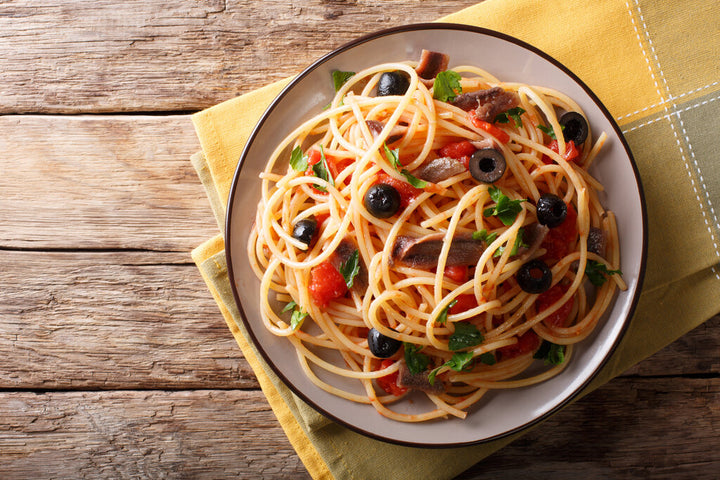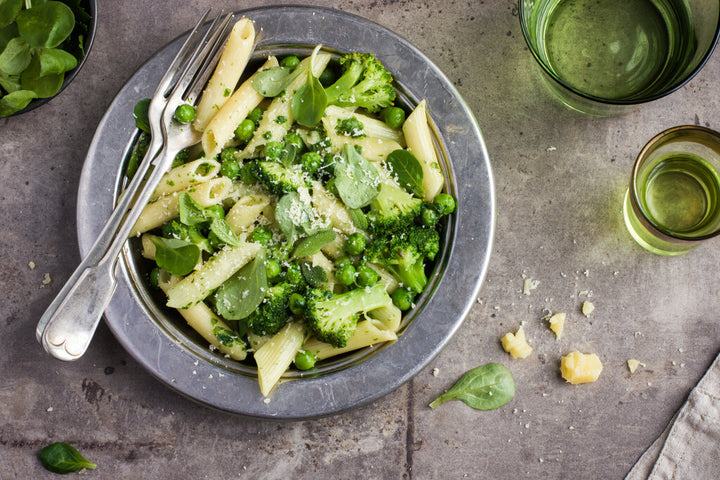Mmmmm! Moroccan eggplant tagine! We love a slow-cooked, simmered stew, and with the right spices and ingredients, you can cook up this sumptuous delicacy, totally meat-free.
Eggplants, chickpeas, onions, tomatoes, and apricots (and a few Moroccan-style spices) are all you need for our hearty and filling, vegetarian tagine. Serve with couscous and yogurt for added authenticity!
With a tagine pot, you can recreate the delightful flavors and aromas of North Africa, without ever having to leave your own kitchen. Here's our sumptuous, slow-cooked, Morrocan-inspired eggplant tagine recipe!
Moroccan eggplant tagine recipe FAQ
Once you've prepared all of those tasty ingredients, all it takes is time to simmer sumptuously in its own juices, for the perfect North African tagine.
You might have a few questions, however, before you start preparing. We've consulted with our most trusted chefs, so keep reading to find out the answers to the more common questions when it comes to cooking Moroccan eggplant recipes!
How do you pick a good eggplant?
If you're new to cooking veggie tagine, then you might be wondering how to pick a good eggplant when you're shopping in the store!
The best eggplants have smooth outer skin and will have a consistent color all over. The color could be dark purple, or it could even appear to be black. The shade itself doesn't matter too much; it's the consistency of color that's most important. Inconsistent coloring means the vegetable is either under or overripe, and neither option will taste as good in your meal.
Eggplants always feel heavier than they look, especially if they are ripe. You can further test if eggplant is ready for cooking by simply pressing your thumb into the skin itself. If it's ready and ripe, your thumb will leave a small imprint. Be careful using this little trick, though, because you don't want to go around bruising all the under-ripe eggplant!
We suggested cooking large eggplants for our recipe, but you can also use lots of smaller, baby eggplants. You'll need around ten baby eggplants for a good-sized tagine. Baby eggplants are often slightly sweeter and will have far fewer seeds than full-sized eggplants. This decision is strictly based on preferences!
Can I prepare tagine with other vegetables too?
Our Moroccan-inspired tagine makes use of a selection of vegetables that you'll easily find in your local store. Still, the real beauty of the tagine cooking process is the ability to experiment with a wide range of different veggies too, and always end up with a delicious home-cooked meal for dinner!
As well as eggplants and onions, vegetables such as zucchini, bell peppers, and mushrooms are a fantastic addition to any Moroccan vegetable tagine. Any other veggies that you might typically roast or stew, including potatoes or squash, will do really well in a tagine too. Branch out and experiment with other veggies you don't regularly use!
Can I make eggplant tagine with meat instead?
An eggplant chickpea stew might not be for everyone, and we get that some people just love their meat. Luckily, the tagine is a very versatile dish, and there are plenty more traditional Moroccan-inspired recipes that use different meats as their primary cooking ingredient.
If you're planning on cooking a meat tagine, then the cooking process is almost exactly the same. Tagine is a style of cooking, after all, and not just the name for the pot. You'll need to lightly braise or brown your meat of choice, as you sautee your onions and garlic at the start of the recipe.
Traditional recipes often include lamb tagine or beef tagine. If you're cooking meat, then the slow-cooking process will help to create a tender dish. Simmer the tagine for as long as you can, so the meat literally falls off your fork or melts in your mouth!
Can I reheat eggplant tagine?
Effortlessly reheat any leftovers you might have! Eggplant tagine will keep safely in the refrigerator for up to 48 hours, and longer if you store it in a resealable container or ziplock bag.
The best way to reheat eggplant tagine is on the stovetop. Reheat the eggplant tagine in a saucepan or in the tagine pot you originally cooked the dish in. Reheat the tagine slowly, using low heat.
If you're in a hurry, then you can place the tagine in the microwave. Use low power to reheat the dish, so you're not left with melted edges and a frozen middle section. Ensure that you microwave it in a suitable container, and keep it covered to stop your microwave from getting messy!
Can I freeze eggplant tagine?
If you have lots of leftovers, then you can freeze the eggplant tagine for up to 6 months. Once the leftovers have cooled down on the side, transfer them to a suitable container, such as a resealable box or a ziplock bag. You can divide the leftovers up into individually sized portions, to allow you to defrost only what you need.
When it's time to enjoy your tagine again, it's best to allow the leftovers to thaw on the side before you attempt to reheat them. If you're in a hurry, you can defrost the leftovers in the microwave on low power.
When the tagine has defrosted, reheat it slowly on the stovetop on low heat, for the best and tastiest results. Use a saucepan or the original tagine cooking pot. Again, if you're running behind, you can reheat the tagine in the microwave too.
The freezing process will breakdown a lot of the spices (the longer it's kept in the freezer, the more taste you lose), so it is a good idea to add some fresh herbs of spices to the tagine when you reheat it again!
Moroccan-inspired eggplant tagine takeaways!
With the FAQs out of the way, we're at the end of our Moroccan eggplant stew recipe, and it's time to start mopping up the leftovers!
This delicious vegetarian dish is bursting with Morrocan-inspired flavors, and it brings a new meaning to the term slow cooking. Why not stew up a Moroccan eggplant tagine, and add a little more spice to your next mealtime?
Leave a comment
Comments will be approved before showing up.
Also in Recipes










